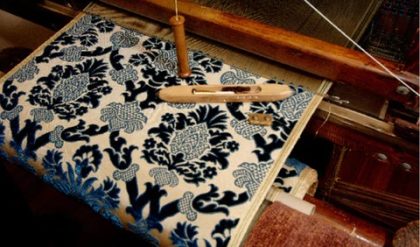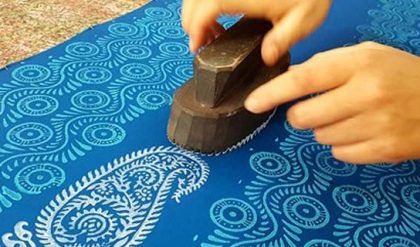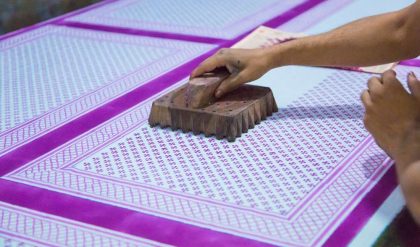
The figure shows projected views of two woven cloths of different construction. At A the warp and the weft threads cover the area of the cloth only partially, but at B the cloth area is covered completely with no spaces left between the adjacent warp yarns, and it will be seen that the relative closeness of yarns in a woven cloth is dependent upon the ratio of yarn diameter, d, to yarn spacing, p. This ratio known as relative cover, can be defined as the proportion of a projected view of a given area of cloth which is covered by threads, and will have a scale from 0 to 1, although it may also be expressed as percentage cover with a scale from 0 to 100 per cent.
d/p = relative cover,
(d x 100)/p = percentage cover
It is preferable to express warp and weft relative cover separately, as the cumulative value of cloth cover does not indicate the comparative importance of each set of yarns which is essential for the determination of certain cloth characteristics.
From the relationship shown above it will be obvious that if d= p. the value of relative cover is one, and this is regarded as the theoretical maximum cover. In practice, however, this value can be exceeded considerably in any one direction, either through yarn distortion, or, by forcing the threads into different planes, especially if the relative cover of the opposite set of threads is reduced correspondingly.
The relative cover for one thread system can be calculated as follows by considering an area of 100 x 100mm:
Area per thread = 100 x d
Area covered by n threads of one system = n x 100 x d
Therefore, relative cover = (n x 100 x d)/(100 x 100) = (n x d)/100
Example: The cloth represented at A is specified as follows: Warp — 25 tex cotton, 267 ends/100 mm; weft—36 tex cotton, 334 picks/100 mm. Find the relative warp and weft cover. (Subscript 1 refers to warp, subscript 2 to weft.)
Warp relative cover = (n1 x d1)/100
= (267 x (25)/(26.7))/100
= 0.50
Weft relative cover = (n2 x d2)/100
= (334 x (36)/(26.7))/100
= 0.75





